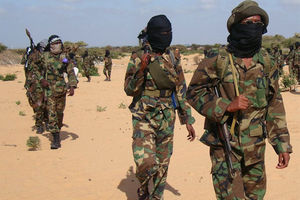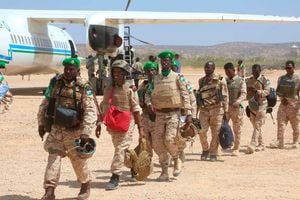
Mr Charles Onyango-Obbo
A few days ago the Somali extremist militant group Al-Shabaab released a one-hour video showing off thousands of recruits for its special forces. It was complete with motorcycle squads, horse units, and well-drilled men. At the same time, senior US defence officials were quoted saying that Al-Shabaab had now reached a force of up to 13,000 fighters and reversed all Somali National Army (SNA) gains in central Somalia over the last two years.
The African Union Transition Mission in Somalia (ATMIS), previously the African Union Mission in Somalia, Amisom, is scheduled to end its mission in December, but the government in Mogadishu is pushing for its mandate to be extended. However, the mission is broke. The European Union (EU), which had been paying for it, stopped writing the cheques. Warnings of the resurgence of Al-Shabaab, have largely gone unheeded by an international community weary of the incompetence of the Mogadishu government, and which thinks “the tricky Africans are just shouting about Al-Shabaab to shake us down for more money.”
Atmis is demoralised, and the mission is over $140 million behind on its bills and troop salaries. Salary arrears for some of the Atmis foot soldiers go as far back as May 2023. The fear is that with Atmis gone, Al-Shabaab could retake Mogadishu in days.
It would be a tragic waste for Uganda. When no one could go into an Al-Shabaab-ruled and turbulent Somalia, in late February 2007, months after the authorisation of Amisom, UPDF flew a suicide mission to Mogadishu, crash-landed troop carriers at the airport, and seized it. One of the carriers was shot by Al- Shabaab as it landed, and its carcass graced the edge of the runway for years. From there, they established the anchor base for Amisom. In December 2007, they were joined by a full Burundi contingent.
Amisom eventually expanded to include Djibouti, Ethiopia, and Kenya. The cost in blood has been high. In May last year, Mohamed El-Amine Souef, the special representative of the chairperson of the AU Commission for Somalia, said that 3,500 Amisom peacekeepers had been killed and hundreds more injured since 2007, the majority of them Ugandans and Burundians (naturally, given how early they entered the fray). These figures, however, are possibly underreported, and analysts say it is more in the region of 6,000-7,000. Al-Shabaab itself has claimed killing more than 12,000 “enemy combatants” over the years. Opinion toward Amisom/Atmis is divided. In some of the troop-contributing countries, especially Uganda and Kenya, there’s probably a 50-50 split, with critics seeing it as little more than a cynical geopolitical and money-grabbing enterprise by the leaders. In Somalia too, resentment of the African Union mission is entrenched in some quarters.
It all places the Atmis nations in a quandary. To walk away, and let Al-Shabaab restore the 2007 status, would be a colossal waste of thousands of troops’ lives lost. To stay, after 17 years, even if money is found, would be to fall into a forever-war trap.
However, now Somalia has joined the East African Community. Sooner, rather than later, all Somalis – including Al-Shabaab – will, and must, enjoy greater freedom of movement in the bloc. For countries like Uganda, there is no longer the comfort that it doesn’t share a border with Somalia. AU sources I have spoken to recently, say that leaders of the AU-Atmis countries could offer a breakthrough on a new long-term Somalia security plan that the international community could buy into. There are two problems. One, Somalia doesn’t want Ethiopia at the table, in part because of Addis Ababa’s recent controversial port deal with breakaway Somaliland territory. But a settlement in Somalia, or the Horn of Africa, without Ethiopia, is doomed.
The second issue, the easier one to overcome, is President Museveni. “The Mzee is the one who can offer leadership on this, but he has become too cautious on these geopolitical things these days”, a senior AU figure told me. Another even said he had “become hidebound.”
They are hoping it is only a strategic recalibration, not a retreat by an ageing long-ruling leader. Next door in the eastern Democratic Republic of Congo, where Uganda has been battling a seemingly resurgent Allied Democratic Forces (ADF), Al-Shabaab support has been one of the elements of the secret sauce behind the rebels’ revival.
“A tie-up between the ADF and Al-Shabaab has been a boon for both”, one of them told me. “The ADF has been able to supply Al-Shabaab with precious minerals which it has sold to fill its coffers. In turn, Al-Shabaab has provided them training, weapons they have been getting through the [Yemen] Houthis, and looped them into jihadi intelligence networks”.
When we went to sleep in 2007, Al-Shabaab was an issue with some suka-and-rugabire-wearing extremists in a faraway land. We’ve woken up in 2024, and it’s a cobra on our doorstep.
Mr Onyango-Obbo is a journalist, writer and curator of the “Wall of Great Africans”. Twitter@cobbo3





